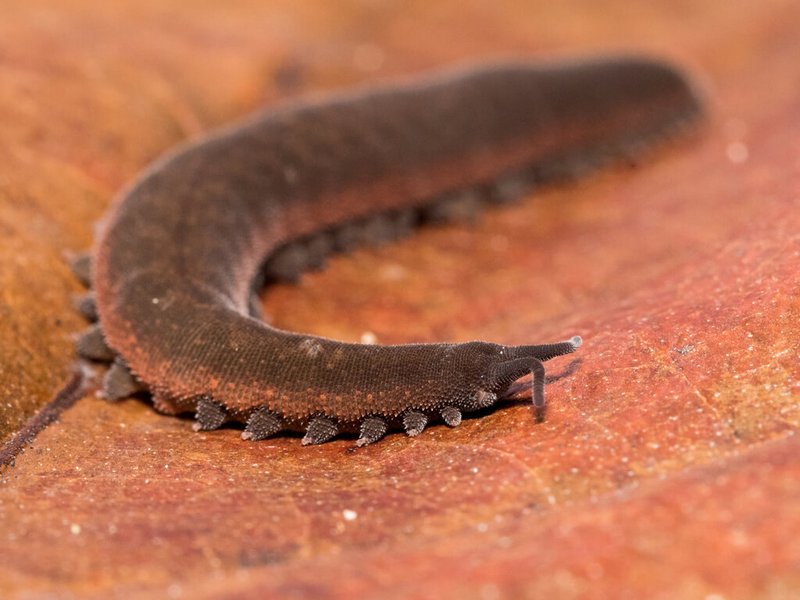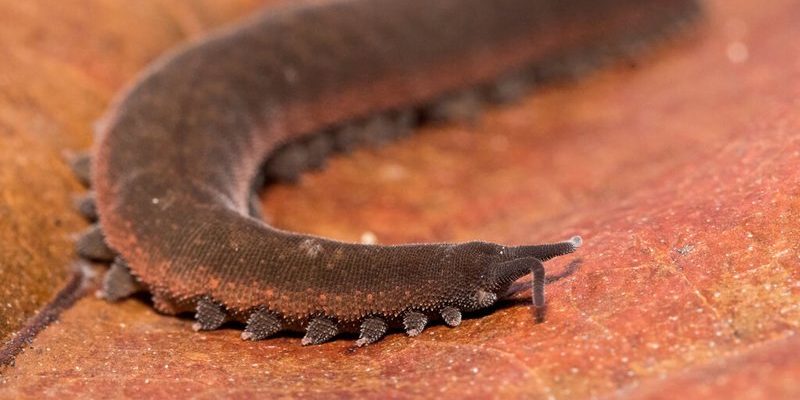
Honestly, this comparison can feel like exploring two different worlds. Velvet worms are like little living gummy worms, smooth and soft, while spiders remind us of small aliens with their many eyes and quick moves. Both have their own ways of finding and capturing prey, showcasing the wonders of evolution and adaptation. So, let’s dive into the hunting behaviors of velvet worms and how they stack up against our eight-legged friends, spiders.
What Are Velvet Worms and Spiders?
Before we rush into their hunting habits, it’s essential to know what velvet worms and spiders are all about. Velvet worms, part of the phylum Onychophora, are soft-bodied, segmented creatures often found in humid, leaf-littered environments. They are typically a bit bigger than your average worm, measuring around 1 to 10 cm in length, and have a velvety texture. Imagine the softest fabric you can think of—that’s what a velvet worm feels like!
On the other hand, spiders belong to the arachnid family, which includes scorpions and ticks. They typically have eight legs, a segmented body divided into the cephalothorax and abdomen, and often sport specialized silk-producing glands. Spiders are masters of adaptation, found in nearly every environment on Earth. From creating stunning webs to hunting on the ground, they showcase remarkable diversity.
Hunting Strategies of Velvet Worms
Velvet worms have a unique approach to hunting that’s quite different from spiders. Here’s the thing: these little guys often rely on ambush tactics. They prefer to stalk their prey, which mainly includes small insects like beetles and ants. Looking like something out of a sci-fi movie, a velvet worm can extend a sticky, gooey substance from its mouth to catch unsuspecting prey. It’s almost as if they’re shooting an adhesive web without the weaving part!
Once the silk-like secretion envelops the victim, the velvet worm draws it in and consumes it whole. Imagine using a water gun to trap someone: it’s messy, but it gets the job done. Interestingly, velvet worms can also walk on their many tiny legs, allowing them to navigate their moist habitats gracefully. This combination of ambush tactics and a sticky meal helps them thrive in environments where stealth is key.
Velvet Worms’ Unique Adaptations
What’s truly remarkable about velvet worms is their set of adaptations tailored for hunting. For one, their soft, flexible bodies allow them to squeeze into tight spots where prey might be hiding. They can easily move through leaf litter and crevices in search of food. Plus, their keen sense of touch is vital for detecting vibrations, alerting them to the presence of potential meals nearby.
Another fascinating adaptation is their camouflage. The color and texture of a velvet worm can blend into its surroundings, making it hard for predators and prey alike to spot them. This stealthy hunting style is crucial for their survival, allowing them not just to capture prey but also to avoid becoming a snack themselves.
How Spiders Hunt Their Prey
Now, let’s shift gears and dive into the spider world. Spiders are known for their diverse hunting strategies, which can vary widely from species to species. Some spiders, like the orb-weaver, create intricate webs to ensnare flying insects, showcasing their architectural prowess. Other spiders, such as the wolf spider, prefer to hunt actively without webs, stalking their prey and pouncing when the moment is right.
The web-building method is fascinating. Spiders produce silk from specialized glands, which they spin into webs that can range from delicate to robust. The silk is sticky, ensuring that any unsuspecting insect that flies into their trap becomes an easy meal. Imagine playing a game where you set up a clever trap to catch a treat; that’s what spiders do with their webs.
Variations in Spider Hunting Techniques
Not all spiders rely on webs, though. Some, like the jumping spider, are active hunters, relying on their excellent vision and quick reflexes to capture prey. They can leap many times their body length to snatch up insects, akin to a tiny superhero with extraordinary agility.
Moreover, some species of spiders use a technique called “sit-and-wait.” They remain perfectly still, camouflaged against their surroundings, waiting for the right opportunity to lunge at their unsuspecting prey. This technique is efficient and energy-conserving, allowing spiders to survive in environments where food may be scarce.
Comparing Hunting Techniques: Velvet Worms vs. Spiders
When it comes to comparing velvet worms and spiders, their hunting techniques reveal significant differences. Velvet worms embody the art of stealth and ambush, while spiders exhibit a wider range of tactics, from web-building to active hunting. Each strategy plays a vital role in their survival and reflects how different evolutionary paths can lead to unique adaptations.
Let’s look at a quick comparison.
| Feature | Velvet Worms | Spiders |
| Hunting Style | Ambush & sticky secretion | Web-building, active hunting, or sit-and-wait |
| Prey Capture | Wraps prey in adhesive slime | Uses webs or jumps |
| Environment | Moist, leaf-littered areas | Varies widely, adaptable to many habitats |
This comparison shows that while both velvet worms and spiders are skilled hunters, they’ve evolved different methods to thrive in their respective environments. This diversity in hunting behavior is a testament to the richness of life on Earth.
Why Understanding These Behaviors Matters
So, why should we care about the hunting behaviors of velvet worms and spiders? Understanding these behaviors can give us insight into ecological balance and the interconnections between species. Each plays a role in their ecosystem—velvet worms help control insect populations, while spiders also help manage pests.
Moreover, studying these creatures teaches us about adaptation and survival. By learning about their hunting techniques, we can appreciate the complexity of life and the beauty of evolution. It’s a reminder that every creature has a unique story to tell in the grand tapestry of nature.
The Future of Velvet Worms and Spiders
As we explore our world, both velvet worms and spiders face challenges, particularly due to habitat loss and climate change. Maintaining biodiversity is crucial for the health of our ecosystems. The more we understand about these fascinating creatures, the better equipped we are to protect their habitats.
Conversations about conservation often start with the little guys. Encouraging curiosity and awareness can build a stronger connection to nature. As we celebrate the uniqueness of velvet worms and spiders, we recognize their contributions to the planet.
As we finish up our chat about these intriguing creatures, remember that both velvet worms and spiders demonstrate the wonders of evolution through their diverse hunting behaviors. They remind us that nature is full of surprises, no matter how small or unusual the critters may seem. So next time you see a spider or a velvet worm, take a moment to appreciate their unique roles in the world around us.

